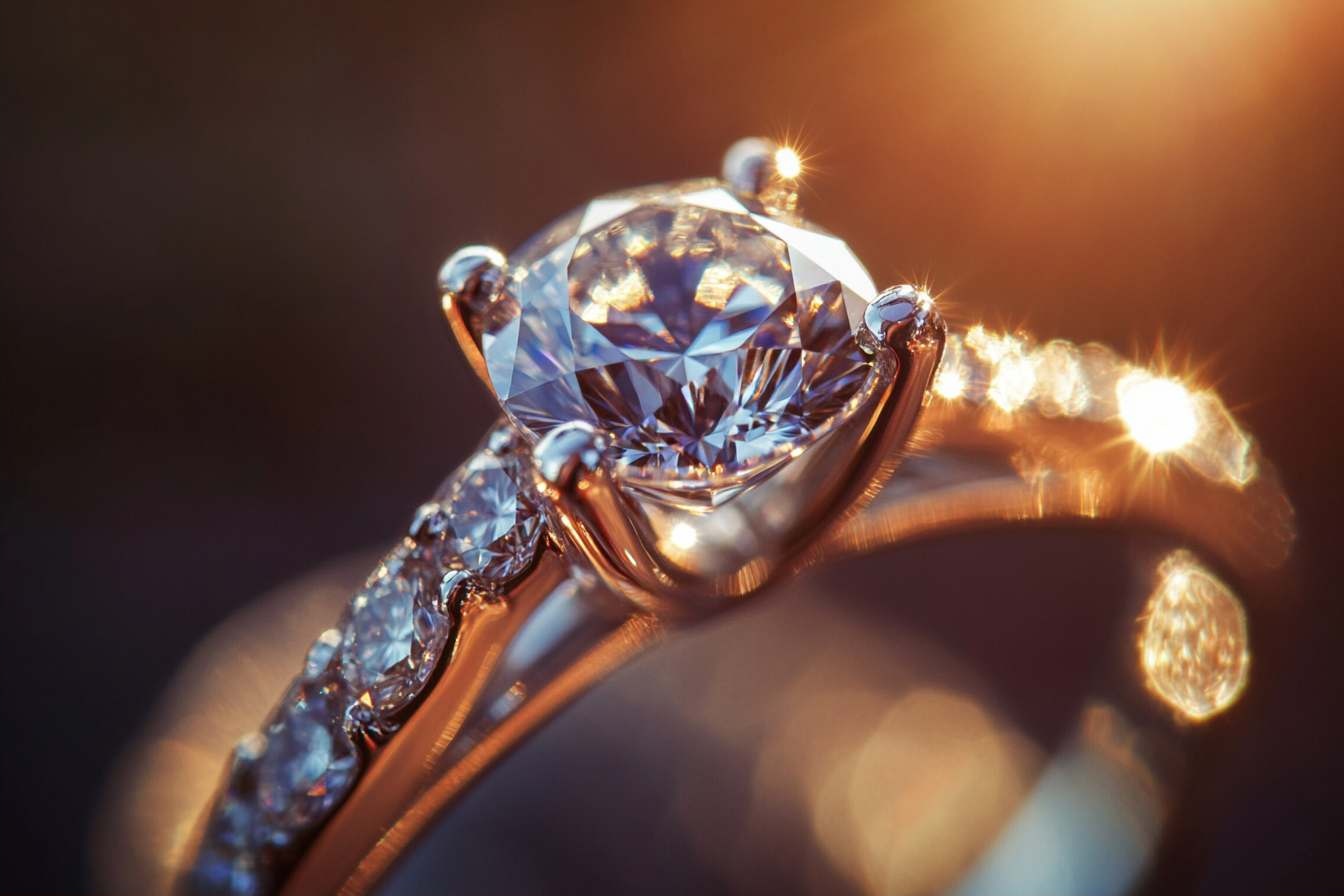Read tips for Victorian engagement ring styles
Victorian engagement rings capture a timeless era of romance and elaborate artistry that continues to enchant modern couples. These stunning pieces from the 1837-1901 period showcase intricate metalwork, symbolic motifs, and gemstone arrangements that tell deeply personal stories. Understanding the characteristics and styling possibilities of Victorian rings helps you appreciate their enduring appeal and incorporate their vintage elegance into contemporary life.

Discover the charm of Victorian designs
Victorian engagement rings represent three distinct periods within Queen Victoria’s reign, each with unique characteristics. The Romantic period (1837-1855) featured nature-inspired designs with flowers, leaves, and serpents symbolizing eternal love. The Grand period (1855-1880) showcased more ornate and bold designs with larger gemstones and intricate goldwork. The Aesthetic period (1880-1901) emphasized artistic craftsmanship with delicate, feminine details and lighter metalwork. These rings typically feature yellow gold, rose gold, or silver settings, often incorporating multiple gemstones arranged in cluster formations or along decorative bands. The craftsmanship reflects hand-fabrication techniques that create one-of-a-kind pieces with slight variations and personal touches that mass production cannot replicate.
Uncover popular motifs and materials
Victorian jewelers drew inspiration from nature, romance, and symbolism to create meaningful designs. Popular motifs included acrostic jewelry where gemstone initials spelled words like REGARD (Ruby, Emerald, Garnet, Amethyst, Ruby, Diamond) or DEAREST (Diamond, Emerald, Amethyst, Ruby, Emerald, Sapphire, Topaz). Serpent designs represented eternal love and wisdom, while hands clasping symbolized friendship and union. Floral patterns featuring roses, forget-me-nots, and ivy communicated specific sentiments through the Victorian language of flowers. Materials commonly included diamonds, sapphires, rubies, emeralds, pearls, and semi-precious stones like garnets, amethysts, and turquoise. Settings often combined multiple metals, with yellow gold being most prevalent, though rose gold gained popularity during the later Victorian period. Enamel work added colorful accents to many designs, creating striking contrasts against precious metals.
Explore styling tips for modern wear
Incorporating Victorian engagement rings into contemporary wardrobes requires thoughtful consideration of their distinctive characteristics. These rings pair beautifully with vintage-inspired fashion, bohemian styles, and romantic aesthetics featuring lace, flowing fabrics, and delicate accessories. For everyday wear, consider the ring’s profile and whether protruding elements might catch on clothing or require protective settings. Stacking Victorian rings with simpler modern bands creates visual interest while honoring both eras. When attending formal events, let the Victorian ring serve as your statement piece, keeping other jewelry minimal to avoid overwhelming the intricate details. Mix metals confidently, as Victorian designs often combined gold tones that complement both warm and cool-toned accessories. Consider your lifestyle when selecting a Victorian ring, as some elaborate designs suit special occasions better than daily activities. Professional restoration and periodic maintenance preserve these antique treasures for future generations.
Learn about historical influences on jewelry
The Victorian era witnessed significant cultural and technological changes that shaped jewelry design. Queen Victoria’s personal jewelry choices profoundly influenced fashion, particularly after Prince Albert gave her a serpent engagement ring, making this motif immensely popular. The discovery of diamond mines in South Africa during the 1860s increased diamond availability, though they remained precious and often appeared in smaller sizes than modern standards. Mourning jewelry became prevalent after Prince Albert’s death in 1861, featuring black enamel, jet, and dark gemstones that expressed grief while maintaining elegance. The Industrial Revolution introduced new manufacturing techniques, though high-quality Victorian engagement rings remained predominantly handcrafted. Archaeological discoveries in Egypt, Greece, and Rome inspired revival styles incorporating ancient motifs and techniques. The Arts and Crafts movement toward the era’s end emphasized handwork and natural forms, rejecting mass production in favor of artistic individuality. These historical contexts help collectors and enthusiasts understand the stories behind Victorian ring designs.
Embrace the romance of intricate craftsmanship
Victorian engagement rings showcase exceptional artistry that modern manufacturing rarely replicates. Jewelers employed techniques like hand-engraving, filigree work, granulation, and repoussé to create dimensional patterns and textures. Gemstone settings included bezels, prongs, and pavé arrangements that secured stones while maximizing their visual impact. The attention to hidden details, such as engraved messages inside bands or decorative gallery work beneath center stones, demonstrates the personal nature of these pieces. Many Victorian rings feature conversion designs where brooches or pendants could transform into rings, reflecting practical Victorian sensibilities. The patina that develops on antique gold adds warmth and character impossible to achieve with new jewelry. Appreciating this craftsmanship involves examining rings closely under good lighting, noticing the hand-finished touches that distinguish authentic Victorian pieces from modern reproductions. Collectors value these imperfections and variations as evidence of human artistry rather than flaws.
Conclusion
Victorian engagement rings offer a tangible connection to a romantic era celebrated for artistic expression and symbolic meaning. Their distinctive designs, quality craftsmanship, and historical significance make them treasured choices for couples seeking alternatives to contemporary styles. Whether selecting an authentic antique piece or a Victorian-inspired reproduction, understanding the era’s characteristics, motifs, and cultural context enriches the experience of wearing these beautiful rings. The enduring appeal of Victorian jewelry demonstrates that true craftsmanship and romantic sentiment transcend time, creating heirlooms that carry stories across generations.


